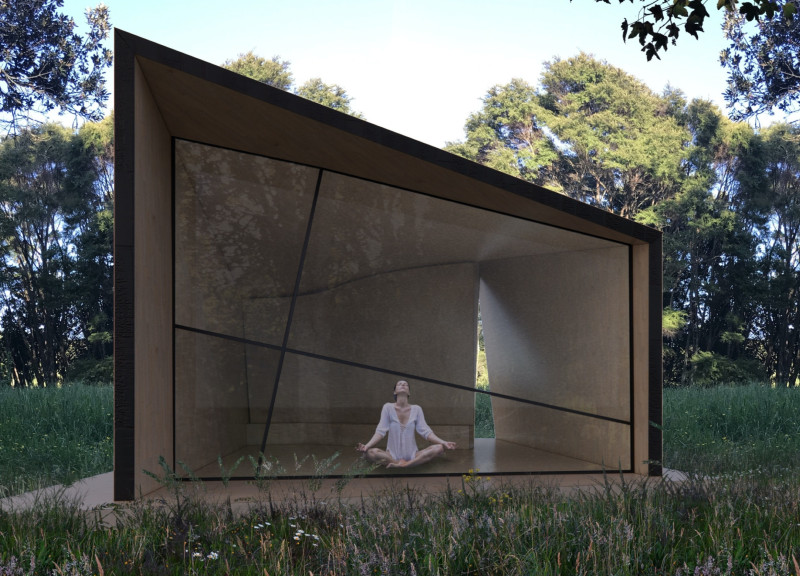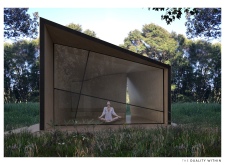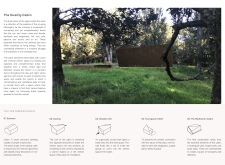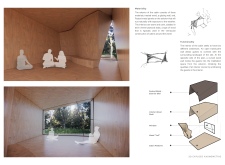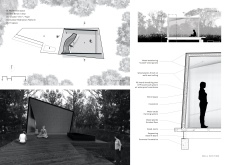5 key facts about this project
The Duality Cabin introduces a modern approach that embraces the idea of duality, focusing on balance between different elements in its design. Located in a natural setting, the cabin functions as a space for meditation and self-reflection. The overall design connects deeply with the surrounding landscape, inviting residents to appreciate the simplicity of the environment while considering the dual aspects of life.
Design Concept
Incorporating the yin-yang philosophy, the design delves into the relationship between light and darkness, as well as between active and passive states. This concept shapes the architectural elements, offering visitors a chance to explore various dimensions of their experience. The cabin presents a clear and straightforward geometry, avoiding unnecessary details, which emphasizes its purpose and functionality.
Spatial Arrangement
The layout of the cabin promotes natural movement between open and enclosed areas. A curved wall serves as a welcoming entrance, guiding visitors into the main room while setting the tone for their experience. The design creates distinct zones that facilitate both interaction and solitude. The extensive glass wall allows natural light to filter into the space, effectively merging the indoor environment with the outdoors and fostering a sense of connection with nature.
Materiality
Materials are thoughtfully chosen to complement the cabin’s aesthetic and usability. The exterior is finished with treated wood, which enhances durability and establishes a relational bond with the environment. Inside, birch veneer plywood is used to create a warm and calming atmosphere. The materials work together to support the design's focus on minimalism and peace, contributing to the cabin’s overall meditative quality.
Aesthetic Detail
Key design features highlight the exploration of duality throughout the cabin. The curved wooden wall creates an intimate meditation space, contrasting with the transparent glass wall. This contrast between solid and fragile elements creates an engaging dialogue, inviting occupants to experience both the enclosure and openness of the space. Light plays an important role here, as it filters through the glass, casting gentle shadows and enhancing the natural textures of the wood, deepening the sensory experience within the cabin.


